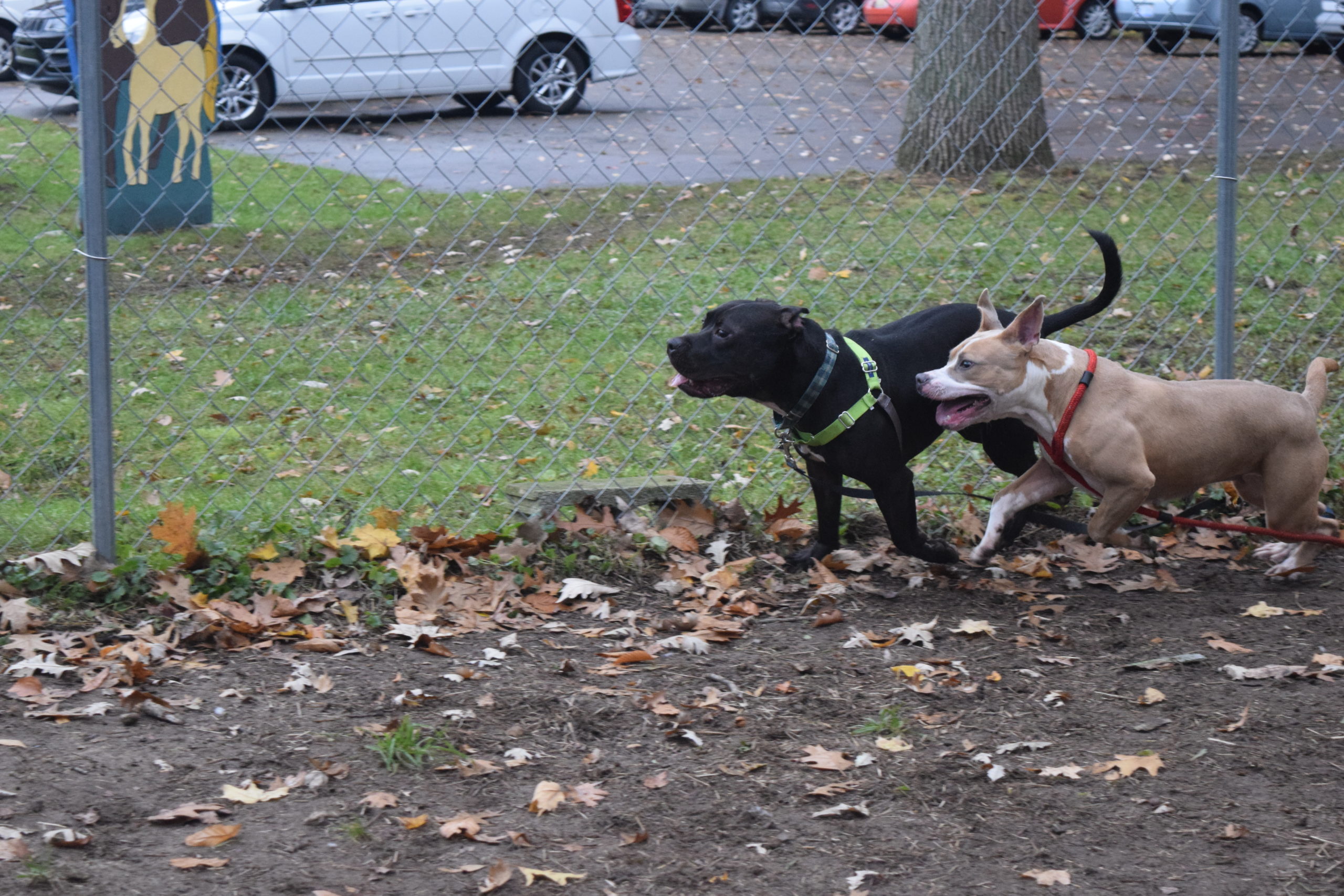If you are considering adopting a new pet from the Humane Society of Macomb, we first wanted to thank you! Doing so saves both the life of the animal you adopt and the one you made room for.
If you already have pets at home and are looking to add a new furry friend to your family, there are a few things to consider before starting this process. Create a plan now to ease the transition!
Does your current pet get along with others?
We already know you want to add a new family member, but first, take a moment to consider your current pet’s needs. This will be a huge adjustment for them as well.
When you take your dog on a walk, what happens when you encounter another dog? Is your dog excited, or are they reactive? Yes, interacting with another dog while outside in neutral territory is different from bringing another dog into your home but this could be a good indicator of their behavior.
Has your cat interacted with another cat before? How did that go? Cats can form social relationships with other cats and, despite widespread belief, are not always loners.
Some pets do not want company from another four-legged friend, and you need to respect that!
Get to know the pet you want to adopt
Make sure you get to know as much as you can about the pet you want to adopt. This is important in general but is crucial when you already have other pets at home.
If you have any questions about the pet at all, please feel free to ask us. Here are a few good questions to ask about any cat or dog you are considering adopting:
- Have they lived in a home with other pets?
If a dog or cat in our shelter already has a positive history of living in a multi-pet family, this is a good sign. They have already shown a level of comfort interacting with others.
- Do they have any known behavioral problems?
Dogs and cats have their own unique personalities. Identifying potential behavioral problems allows you to keep an eye out for triggers during introductions. We do offer affordable and compassionate feline and canine behavior advice and training for the community.
- Do they have a history of abuse?
Unfortunately, not every pet who finds its way into our shelter has had a happy past. Being aware of their history will allow you to give them extra space and guidance during this new transition.
- Has this dog interacted with cats before? Has this cat had a good relationship with dogs?
Despite widely held belief, dogs and cats are not always mortal enemies! It is possible to live harmoniously with a dog and cat, but, as always, it just depends on their individual personalities.
- How old is the pet?
Consider finding a pet that is of a similar age to your pet at home.
Take your time during introductions
Once you have adopted a new furry friend, take your time during introductions! This process will not take place overnight. Our main goal is to minimize stress for all pets involved.
Do not immediately force your pets to interact, go at their pace. Your newly adopted pet will already be stressed from the unfamiliar environment. Limit the new pet to one room of your house for now. Always make sure they have enough food and water, as well as a cozy place to sleep. Provide them with toys to play with or other enrichment.
Your existing pet(s) will be able to tell there is a new member of the family. Allow them to sit on the outside of the door and smell the newcomer. This provides a safe distance and still allows familiarity to grow before a face-to-face introduction.
Start by allowing your pets to interact for a few minutes at a time. Gradually increase the time they spend together if there are no issues.
Choose a neutral location when possible
Is your current pet used to being ruler of the realm? Introducing a new pet can upset this balance and cause territorial behavior.
Choosing a neutral location can help. That way, your pets may focus on getting to know each other rather than redistributing territory. The area should also be large enough that your pets have personal space.
If you are introducing two cats, finding a neutral space might be tricky because you will likely be indoors.
When introducing dogs, you have the option to take this introduction to a safe and controlled outdoor environment. Always examine the environment for any hazards before bringing your pets into it.
You could also consider providing new toys that neither pet has claimed yet. That way, they have something to play with. Toys also give you a tool to redirect unwanted behavior by providing a distraction.
ALWAYS keep an eye out for reactive behavior
Even if you think introductions are going well, do not let your guard down. Always be alert to reactive behavior and be ready to separate your pets if needed. It may be wise to ask a friend or family member present during introductions to help separate pets if a fight breaks out.
We hope these ideas help you smoothly introduce a newly adopted pet to your family. If you are interested in learning more helpful ways to protect your pet’s safety check out our blog here.

